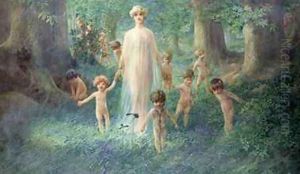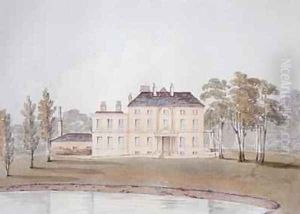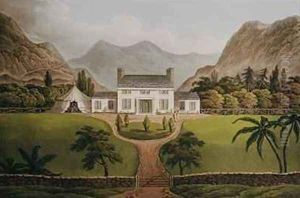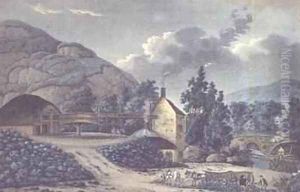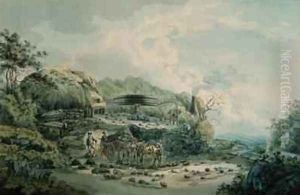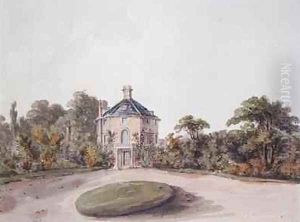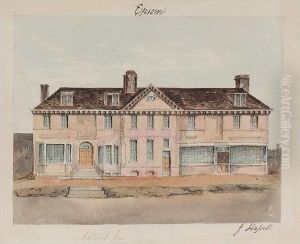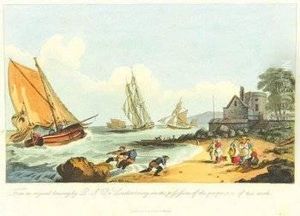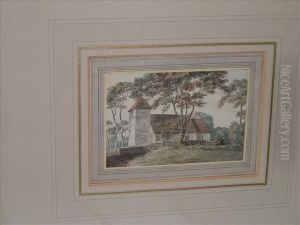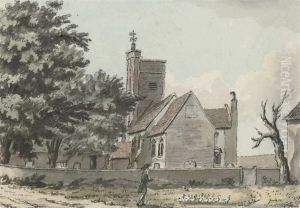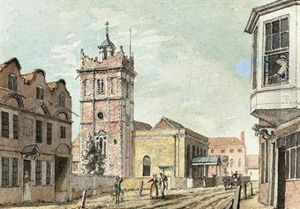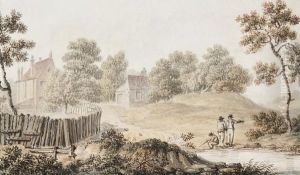John Hassell Paintings
John Hassell was an English watercolour painter, engraver, illustrator, and writer, known for his works that document landscapes, topographical views, and antiquities, mostly within the United Kingdom. Hassell was born in 1767 and was apprenticed to a shipwright before becoming a student of the well-known artist William Shipley. His early works were strongly influenced by his mentor.
Hassell's career spanned a time when there was a growing interest in Britain's rural landscapes and historic sites, partly fueled by the inability of the British to travel to Europe during the Napoleonic Wars. He capitalized on this interest and produced numerous illustrations and books depicting the scenery of England, particularly around London and Surrey. His publications include 'Tour of the Grand Junction' (1819), which illustrated the then-new Grand Junction Canal, and 'Picturesque Rides and Walks' (1817-1822), featuring 120 plates of the surroundings of London.
In addition to his topographical work, Hassell was also known for his association with the art of aquatint, a technique of printmaking that allowed for the reproduction of watercolor paintings with a tonal effect that imitated wash drawings. He used this method to great effect in his illustrations.
Despite his contributions to English topography and the popularity of his books and prints during his lifetime, Hassell's work was later overshadowed by more prominent artists of the Romantic period, such as J.M.W. Turner and John Constable. Nevertheless, Hassell's detailed and carefully composed views remain valuable records of the English landscape of his time.
John Hassell died in 1825, leaving behind a large body of work that provides a window into the picturesque and the changing face of early 19th century England.
